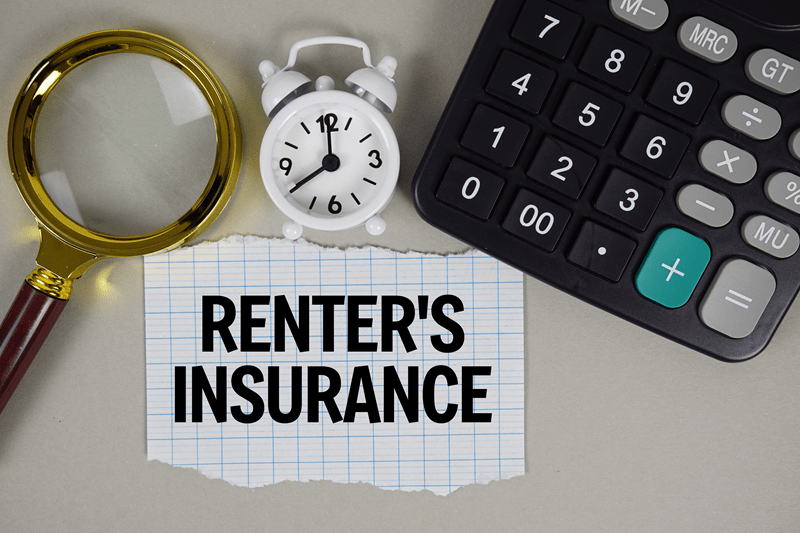
Most renters sign their policy, shove it in an email folder, and move on with life. Then something bad happens. A leak, a break in, a fire in the next apartment. Suddenly, the renters claim process goes from “I will look at it later” to “I need this money now, what do I do”.
In that moment, it is easy to feel stuck. You are worried about safety, trying to clean up, talking to your landlord, and at the same time wondering which photos to take and who to call first. It is a lot.
The good news is that most claims follow the same basic pattern. Stay safe, document the damage, tell your insurer quickly, then follow their checklist. Once you see the steps laid out in normal language, the whole thing feels less like a secret system and more like a process you can actually handle.
After any incident, your first job is not paperwork. It is safety. If there is fire, smoke, or flooding, get out and call emergency services. Check on roommates and neighbors. Only when things are calm again should you start thinking about insurance.
When you are ready, grab your phone and record what happened. Take photos and short videos of every affected area. Show wide shots of the room and close ups of damage. Do not throw anything away yet, even if it looks ruined. Those items help tell the story of your loss inside the renters claim process later.
If your place feels unsafe to stay in, talk to your landlord and your insurer about next steps. Some policies may help with temporary lodging, but you will need to ask directly and keep all receipts.
Before you hit submit on anything, it helps to know what kind of claim you are making. Is it for your stuff, like a laptop or clothes. Or is it damage inside the unit that might count as part of renters damage claims for walls and fixtures. Sometimes both are involved, especially after bigger incidents like fires or major leaks.
Make a simple list of what has been affected. Start with big items, then smaller ones. Note brands, rough purchase dates, and approximate prices. Old emails, online orders, and photos can help you remember details. This rough list will turn into your own personal item claim guide while you talk to the insurer.
Do not worry if the list is not perfect on day one. You can often add items later, as long as you mention them within the deadlines your policy sets.
Few things feel worse than realizing someone has been in your space without permission. If you come home to a broken lock or missing items, your first step is always to contact the police. Most insurers will want a report number before they process a stolen property claim.
Walk through the apartment and note what is missing or damaged. Record the broken lock, door, window, or drawer. List electronics, jewelry, bags, and other items that are gone. Check old selfies and room photos to prove you owned them.
When you report the stolen property claim to your insurer, share the police report details, your item list, and any serial numbers or receipts you have. Being calm and factual helps more than trying to guess exact values on the spot. You can always refine numbers later in writing.
Not all problems involve missing items. Sometimes a pipe bursts in the unit above you, or a kitchen fire in another apartment sends smoke into your place. When your stuff and the actual unit are both affected, renters damage claims can feel complicated.
Here is the simple split. Your renters policy usually covers your belongings. The landlord’s policy often covers the structure and built in fixtures. If the carpet, walls, or ceiling are damaged, the landlord and their insurer may handle that part, while your policy helps with furniture, clothes, and electronics.
When you talk to your insurer about renters damage claims, be clear about what belongs to you and what belongs to the property. This saves time and prevents finger pointing later between you, the landlord, and different insurance companies.

Once you have photos, notes, and a basic list of items, it is time for apartment claim submission. Most companies let you start this online or through an app. Some still use phone calls. Go with whatever is fastest and easiest for you, as long as you get a claim number at the end.
Share the date, time, and cause of the incident, along with your early item list and any reports. Ask exactly what they need next. They might want more photos, receipts, or forms. Keep everything in one folder so you are not hunting for files each time.
If you are unsure about anything, use your renters insurer contact channels to ask questions. Chat, phone, or email are all fine. Just make sure you understand what they expect from you and by when. That way, your apartment claim submission does not get stuck simply because one document was missing.
Dealing with call centers can feel like a job on its own. To make life easier, write down your policy number and claim number before you call. Keep notes of who you speak to and what they say. Short bullet points are enough.
If you feel overwhelmed, remember you can always pause and say, “Can you repeat that in simpler words” or “Can you send this to me in writing”. A good representative will understand. You do not need to know all the jargon. You just need to know your rights and responsibilities.
Using renters insurer contact well is about staying organized, not being an expert. The more clearly you explain what happened, the easier it is for them to match your situation to the right part of your policy.
As you go through the process, it is very easy to forget what you have already said and what you still need to send. This is where your own personal item claim guide really helps. It can be a simple spreadsheet or notebook page listing items, values, and whether you have already shared proof.
Update it each time you send new documents. Mark which items the insurer has accepted, which they are still reviewing, and which they have questions about. This makes it easier to spot gaps and follow up calmly instead of re telling your entire story from scratch.
Over time, this little system also helps if you need to negotiate. You can clearly show what was lost, what was approved, and where you feel the offer is short compared to real replacement costs.
There are a few traps many renters fall into. Waiting too long to report the incident. Cleaning everything before taking photos. Throwing away damaged items too early. Or assuming the landlord will handle everything for them.
Another common issue is forgetting that your policy has limits and deductibles. Even a smooth renters claim processwill only pay up to certain amounts, and you might still have to cover a portion yourself. Reading the key sections of your policy when things are calm can spare you some surprises later.
If something in the decision does not make sense, ask politely for a breakdown. You can request explanations in writing and compare them with your notes. Understanding the “why” behind a payment makes the final result feel more fair, even if it is not perfect.
At the end of the day, no one dreams of becoming an expert in insurance. Most people just want their home to feel normal again. Learning how the renters claim process works is not about memorizing every clause. It is about knowing enough to protect yourself when life gets messy.
By staying safe, documenting carefully, doing a clear apartment claim submission, and using your insurer’s support channels wisely, you give yourself the best chance of a fair outcome. Add a little patience, a bit of organization, and a determination to stand up for what you lost, and the whole situation becomes more manageable.
You may not be able to control leaks, break ins, or surprise accidents. But you can control how prepared you are to recover your costs and move on. And that small bit of control can make your rented place feel a lot more like home.
This content was created by AI